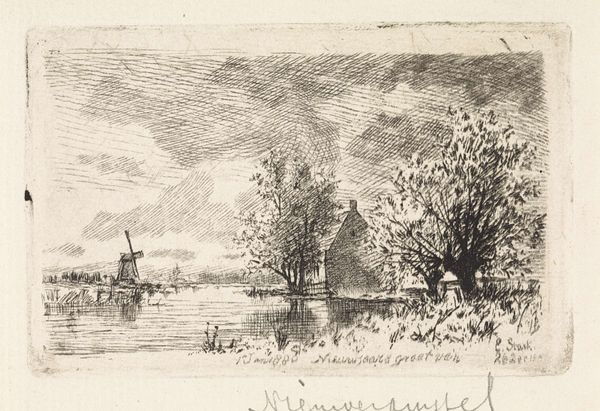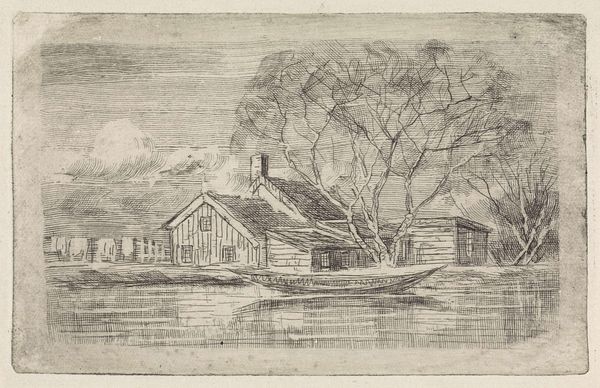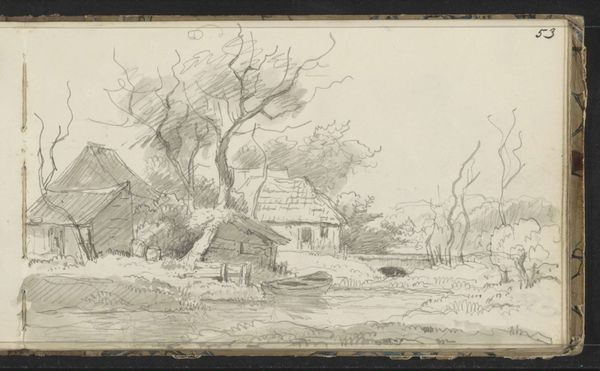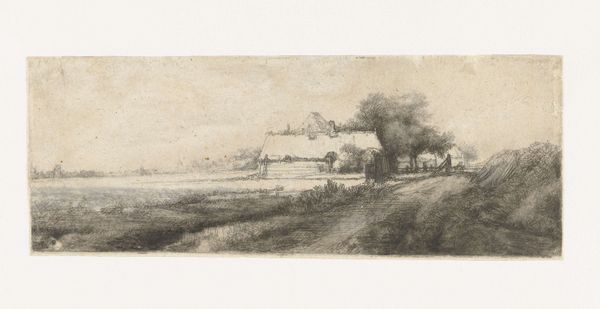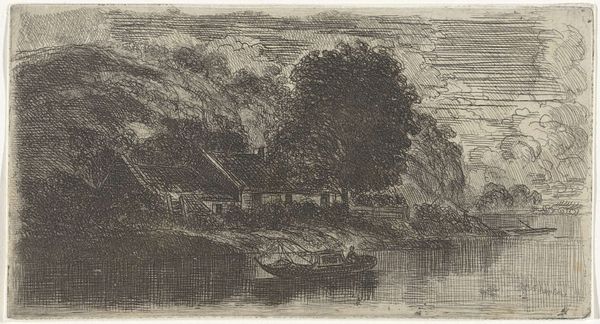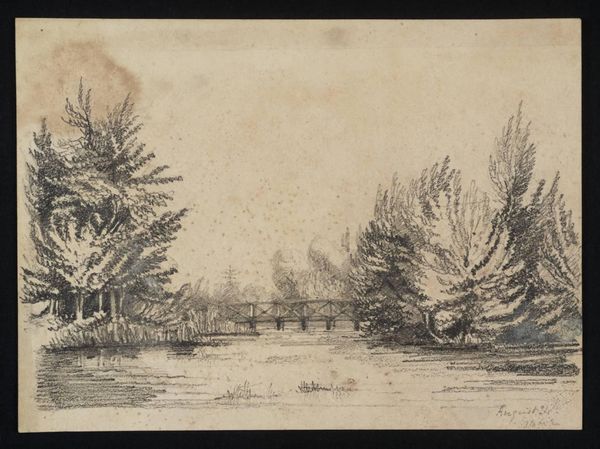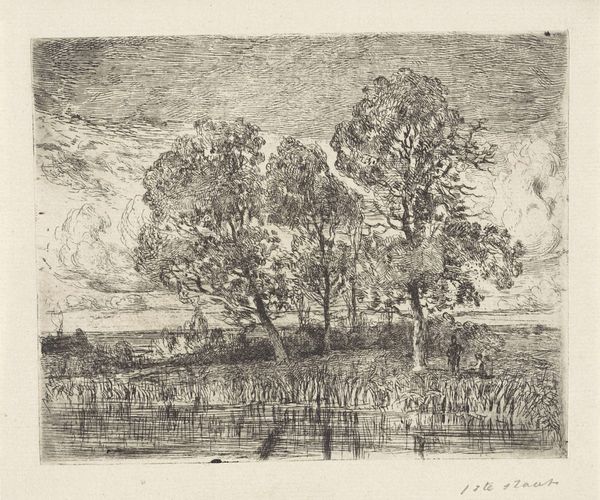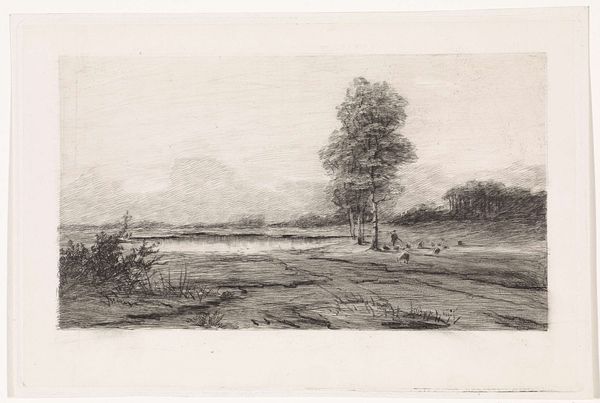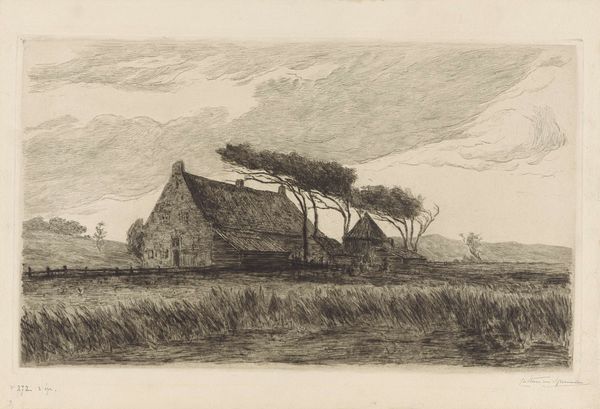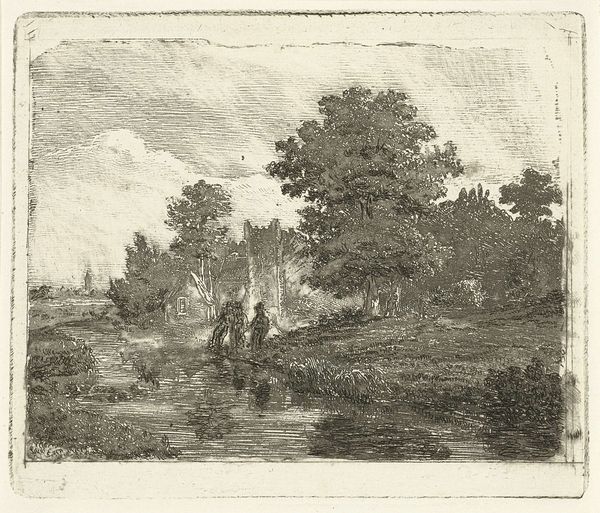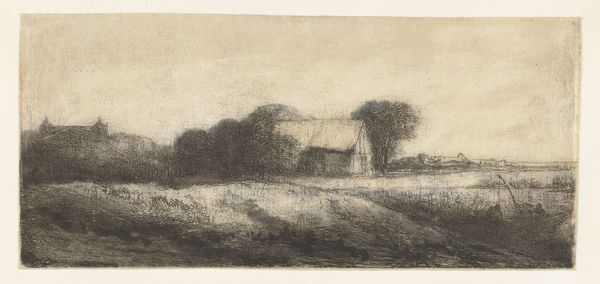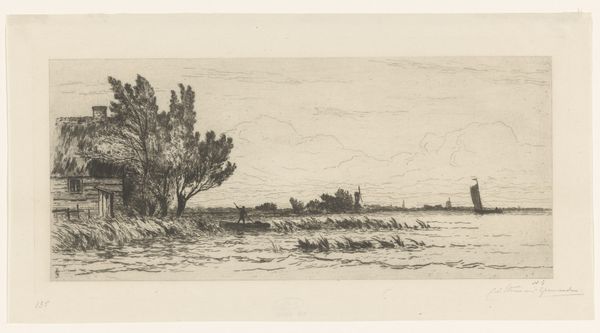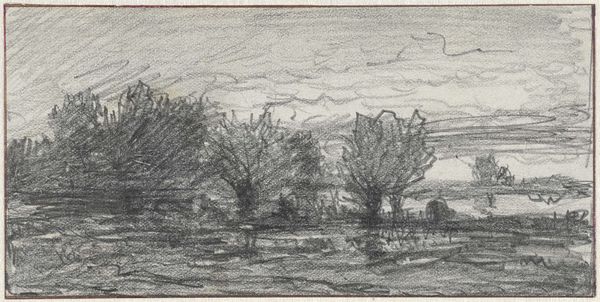
etching
#
impressionism
#
etching
#
landscape
#
realism
Dimensions: height 59 mm, width 110 mm
Copyright: Rijks Museum: Open Domain
Curator: Let’s consider Elias Stark’s etching, “Boerderij onder twee bomen met aan de horizon een stad”, dating to 1887. It resides here at the Rijksmuseum. Editor: Immediately striking. It feels very raw, almost elemental. The sky is heavy with what looks like an impending storm, and the skeletal trees guarding that small farmhouse evoke a sense of isolation, like the etching captures a specific, transient, almost private, moment in a very palpable form. Curator: It does encapsulate a Dutch sensibility, reflecting a national romanticism that coincided with industrialization. Stark, along with his contemporaries, sought to memorialize the pre-industrial landscape amidst growing urban sprawl. His choice of etching as a medium provided relatively affordable access to art and cultivated an appreciation of authentic Dutch identity among the rising middle class. Editor: The etching itself would have involved labor-intensive processes; the grounding, the acid baths… Look at how those layered lines create such depth with minimal use of tone! And it mirrors the landscape itself. The texture is paramount; the bare trees contrasted with what seems like dark, almost oozing, ground where one might find the raw material that supports not only Stark and his work, but that community itself. Curator: Stark actively participated in art societies that dictated artistic tastes, which promoted these landscape etchings as distinctly ‘Dutch.’ It’s fascinating how art can both reflect and construct national identity. Editor: It really speaks volumes about how an ostensibly straightforward representation of the natural world, something as commonplace as an etching, would then be completely conditioned by socio-economic processes of labor and access to tools and, above all, a social-historical moment of disruption and change. It is the transformation of reality, the manipulation of raw materials, that allows for its existence as well as reception. Curator: Stark's work illustrates that landscape art can function as cultural and political shorthand, and it makes you wonder: whose history is included or excluded by this carefully composed view? Editor: Indeed. In this case, perhaps considering who worked this landscape brings it all full circle, as a piece of art or even as a scene, ready to materialize into consciousness, or be gone forever.
Comments
No comments
Be the first to comment and join the conversation on the ultimate creative platform.
